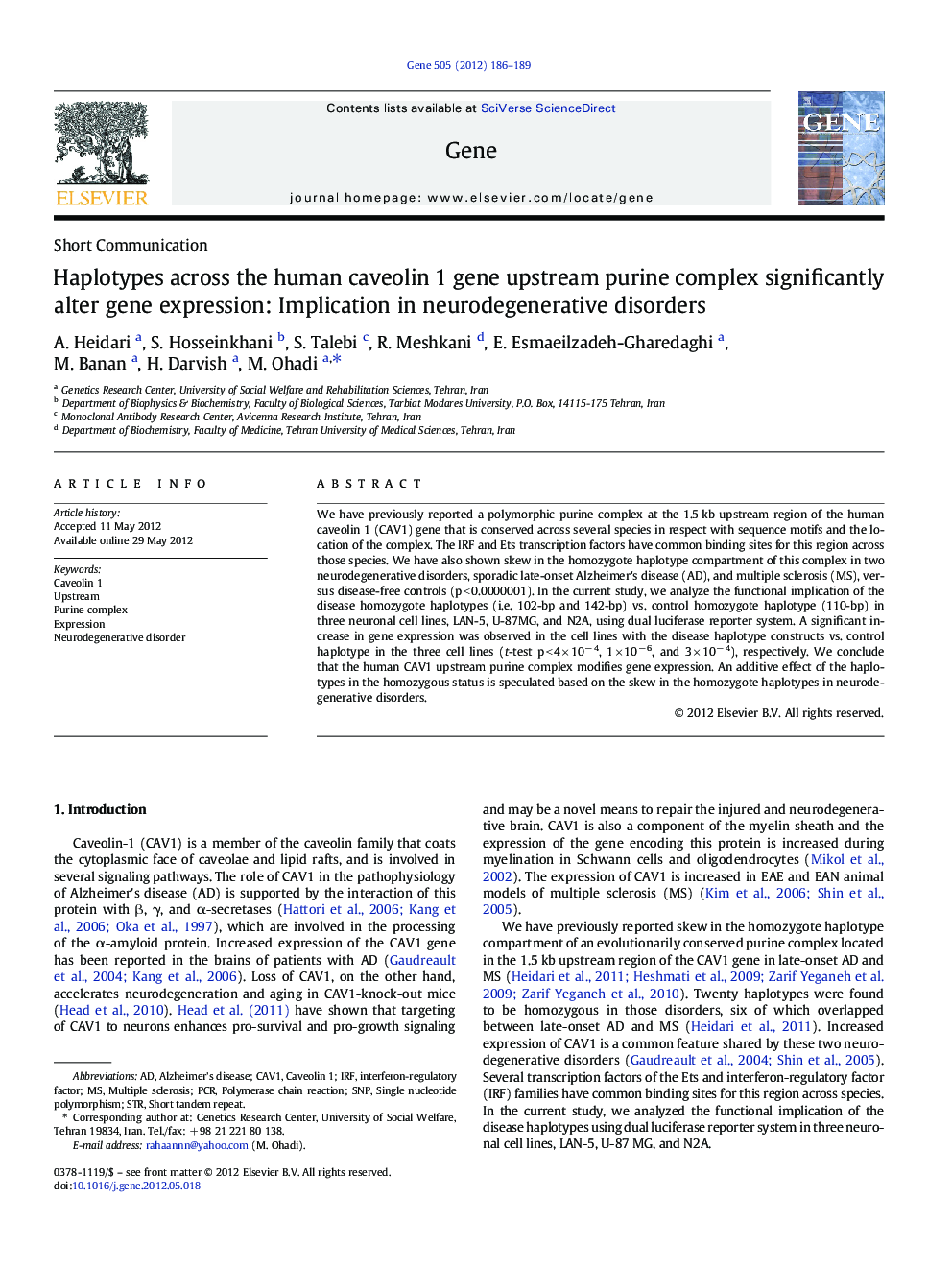| Article ID | Journal | Published Year | Pages | File Type |
|---|---|---|---|---|
| 2817643 | Gene | 2012 | 4 Pages |
We have previously reported a polymorphic purine complex at the 1.5 kb upstream region of the human caveolin 1 (CAV1) gene that is conserved across several species in respect with sequence motifs and the location of the complex. The IRF and Ets transcription factors have common binding sites for this region across those species. We have also shown skew in the homozygote haplotype compartment of this complex in two neurodegenerative disorders, sporadic late-onset Alzheimer's disease (AD), and multiple sclerosis (MS), versus disease-free controls (p < 0.0000001). In the current study, we analyze the functional implication of the disease homozygote haplotypes (i.e. 102-bp and 142-bp) vs. control homozygote haplotype (110-bp) in three neuronal cell lines, LAN-5, U-87MG, and N2A, using dual luciferase reporter system. A significant increase in gene expression was observed in the cell lines with the disease haplotype constructs vs. control haplotype in the three cell lines (t-test p < 4 × 10− 4, 1 × 10− 6, and 3 × 10− 4), respectively. We conclude that the human CAV1 upstream purine complex modifies gene expression. An additive effect of the haplotypes in the homozygous status is speculated based on the skew in the homozygote haplotypes in neurodegenerative disorders.
► Human CAV1 upstream purine complex modulates gene expression. ► Increase in gene expression as a result of the neurodegenerative haplotypes. ► Qualitative effect of motifs across the CAV1 purine complex on gene expression.
